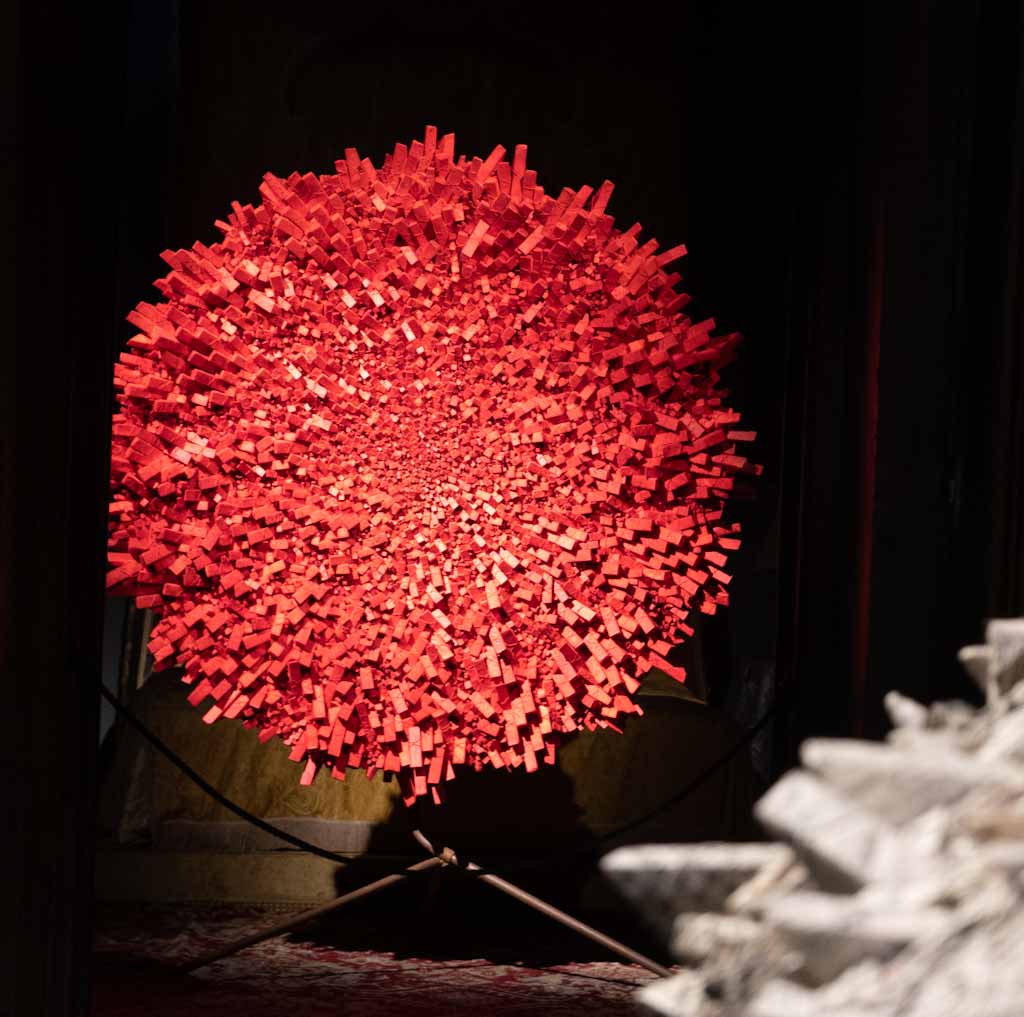It’s the Disneyland of contemporary art. It’s the ultimate exhibition for the Instagram generation. The Biennale in Venice has become the ultimate snackable event, where there is something to be found for every taste. The only challenge is to separate the wheat from the chaff.
It was my 8th visit toe the biggest art show on earth, the first time in spring. No glitzy yachts from oligarchs though this time, there is still a war raging in Europe.
Main exhibition
Strangely enough, that conflict is only occasionally the topic of the artworks on display. Artists are still catching up to the war in the Ukraine. And the main exhibition, The Milk Of Dreams, was conceived long before the conflict began.
As has been the case for several years now, the main exhibition is spread out over the two big locations. Both the Arsenale and the Giardini each demand a day of your agenda. Curator Cecilia Alemani has been so wise to make very clear choices. The biggest was to give female artists unprecedented room to show their works.
The Milk Of Dreams is also inspired by the work of a woman, Leonora Carrington, who has a huge museum of her surrealist sculptures in the jungle town of Xilitla in Mexico. A lace I coincidentally visited some years ago.
The exhibition has a huge focus on paintings on this edition. Jaider Esbell has a series of square paintings on a black canvas, in a room where there is also a massive installation out of nice-smeling soil. Yes, you have read that right. Firelei Baez has some amazing paintings of a blue mermaid. And the triptych video Of Men And Gods And Mud is a mesmerizing work about local tribes in the north of Sudan. All can be found in the Arsenale.
National pavillions
Both the Arsenale and the Giardini also have a string of national pavillions. There is a lot of focus on the relationship between nature ad technology. The Italian pavillion is a critique of the decline of industrialization, and the hope nature has to offer. China, as always, also comes up with a dystopian mix of natural concrete shapes and digitally created projections.
There are plenty of algorithms running the artworks here. Uzbekistan has a beautiful, flowing space with a piano that is being played by a machine. Australia has a massive screen with randomly picked black-and-white pictures, accompanied by the soundtrack of guitar feedback noise. Slovenia has beautiful paintings of digitally created surreal scenes. And South Africa (see photo) has Apparitions, pictures of motifs painted in black and white on windows.

There are also more important social issues thematized. New Zealand has a great series of videos and photos of the fa’afine, a part of the Samoa people who form a third identity.
Romania has a Cathedral of the Body, a 45-minute video about the importance of sex and how that physically feels. There are three main characters in the documentary. Especially the stories of a disabled man are taboo-busting.
Collateral events
Interestingly enough, this theme of the importance of touching someone is also picked up by the Netherlands. They have abandonded their regular pavillion in the Giardini and have taken over a beautiful old church in the north of town. The Human Touch is one of the highlights of this year’s Biennale.
The Dutch pavillion is also a great example of why the Biennale still feels like an adventure. The third day is for me always devoted to finding the national pavillions that are located outside the Giardini and Arsenale. It’s a lot of effort, but it’s also nicely far away from the selfie-takers. And the rewards are grand as well.
Uganda makes its debut in Italy with a collection of colorful, powerful paintings. On the eastern tip of Venice for example is a video from Lita Albuquerque called Liquid Light, which will take you to the salt plains of Bolivia.
The personal highlight was an overview exhibition of Chun Kwamg Young. His works (see photo) are basically a collection of paper triangles, that together form massive canvases and/or sculptures. It is labor-intensive, unique and extremely impressive.

There is more to be discovered in that Dorsoduro part of the city. Claire Tabouret has an overview exhibition as well. Especially her paintings have their own distinct style, all the portrayed people seem to have a scratch. And five minutes walking further (if you manage to find it) you can see the innovative paintings of the ever-evolving Ha Chong Hyun, now 85 years old.
And that wasn’t even all, as there are dozens of smaller and bigger pavillions spread all over Venice. Tiring, yes. But also hugely inspiring and never boring. And of course providing an endless stream of photo opportunities 🙂





